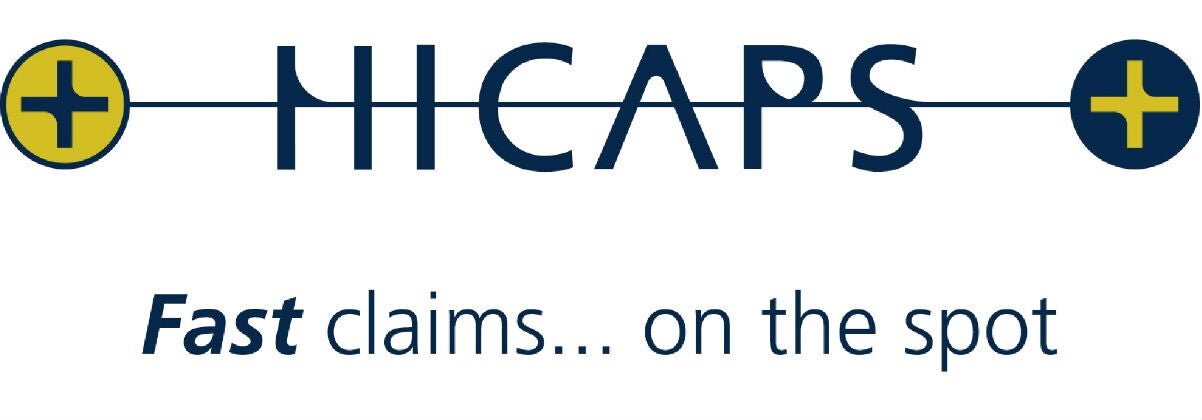High Ankle Sprain
What is a High Ankle Sprain?
A high ankle sprain is injury to the higher ankle ligaments, which are located above the ankle joint (closer to the knee with respect to the ankle).
These high ankle ligaments connect your tibia (shin bone) to the fibula (outside leg bone). The injury involves the syndesmosis between the lower tibia and fibula just above the ankle joint.
Your syndesmosis is a fibrous joint where the two leg bones are connected together by ligaments or connective tissue and usually have very little mobility.
High ankle sprains are much less common but are more disabling than your traditional lower ankle sprain. They must be diagnosed early stage and appropriate treatment initiated, which does differ from a lower ankle sprain.
What Causes a High Ankle Sprain?
High ankle sprains most commonly occur when your foot is planted on the ground and then an excessive outwards twisting of your foot occurs.
High ankle ligaments can also sprain when your ankle is loaded severely and pushed into excessive dorsiflexion. This often occurs in football tackles.
What are the Symptoms of a High Ankle Sprain?
High ankle sprains occur following a traumatic ankle injury.
Patients often report:
The pain felt above the ankle that increases with outward rotation of the foot.
Pain with walking and often significant bruising and swelling across the higher ankle rather than around the malleolus.
Your severity of symptoms will depend on the grade of ankle sprain: mild, moderate, severe.
Patients with a high ankle sprain without fracture may be able to bear weight but will have pain over the junction between the tibia and fibula just above the level of the ankle. This is higher than the more traditional sprains.
How is a High Ankle Sprain Diagnosed?
Your physiotherapist or sports doctor will clinically assess your ankle ligaments integrity.
If they suspect a high ankle sprain or syndesmosis injury they may recommend an X-ray, CT scan or MRI to confirm the diagnosis.
The radiologist will check for a gapping in the inferior tibiofibular joint as shown in this X-ray.
What’s the Treatment for High Ankle Sprain?
It is important to have stability between the tibia and fibula at this level because there is a tremendous amount of force that passes through this area when walking and running. Some rotation of the fibula with respect to the tibia is permitted by these ligaments.
Once you rupture or overstretch these high ankle ligaments, the bones of your lower leg move apart with every step causing pain and loss of your passive ankle stability. You will often require crutches or a walking boot during this phase.
Researchers have concluded that there are essentially six aims that need to be covered to effectively rehabilitate your sprained ankle and prevent recurrence.
Treatment Aims:
Injury Protection, Pain Relief & Control Inflammation
Regain Full Range of Motion
Strengthen your Ankle and Calf Muscles
Restore Joint Proprioception & Balance
Restore Normal Function
Walking
Running
Jumping & Landing
Speed & Agility
Sport-Specific Skills
Resume Sport
High Ankle Sprain Treatment Progressions
There is no specific time frame for when to progress from each stage to the next. Your injury rehabilitation will be determined by many factors during your physiotherapist’s clinical assessment.
You’ll find that in most cases, your physiotherapist will seamlessly progress between the rehabilitation phases as your clinical assessment and function improves. It is also important to note that each progression must be carefully monitored as attempting to progress too soon to the next level can lead to re-injury and the frustration of a delay in your recovery.
Phase 1 - Injury Protection: Pain Relief & Anti-inflammatory Tips
As with most soft tissue injuries the initial treatment is RICE - Rest, Ice, Compression and Elevation.
(Active) Rest: In the early phase you’ll most likely be unable to walk on your sprained ankle. Our first aim is to provide you with some active rest from pain-provoking postures and movements. This means that you should stop doing the movement or activity that provokes the ankle pain. In most cases, you will need to be non-weight bear. You may need to be placed in an ankle walking boot, a supportive ankle brace or utilise crutches.
Ice is a simple and effective modality to reduce your pain and swelling. Please apply for 20-30 minutes each 2 to 4 hours during the initial phase or when you notice that your injury is warm or hot.
Compression: A compression bandage, tubigrip compression stocking or kinesiology supportive taping will help to both support the injured soft tissue and reduce excessive swelling.
Elevation: Elevating your injured ankle above your heart will assist gravity to reduce excessive swelling around your ankle.
Your physiotherapist will utilise a range of helpful tricks including pain relieving techniques, joint mobilisations, massage, strapping and acupuncture to assist you during this painful phase.
Anti-inflammatory medication and natural creams such as arnica may help reduce your pain and swelling. However, it is best to avoid anti-inflammatory drugs during the initial 48 to 72 hours when they may encourage additional bleeding. Most people can tolerate paracetamol as a pain reliever.
Phase 2: Regain Full Range of Motion
If you protect your injured ankle ligaments appropriately the torn ligaments will successfully reattach and heal a normal functional length. Mature scar formation takes at least six weeks.
During this time, it is important to lengthen and orientate your healing scar tissue via massage and exercises designed to address your joint range of motion, muscle length and normal neural tissue motion.
Just as importantly, you should not overstretch ligaments and soft tissue, or you may develop a passively unstable ankle. Your physiotherapist will prescribe the exercises that are best suited to your needs.
Phase 3: Restore Muscle Strength
Your calf, ankle and foot muscles will require strengthening after a high ankle sprain. It is important to regain normal muscle strength to provide normal dynamic ankle control and function.
Your strength and power should be gradually progressed from non-weight bear to partial and then full weight bear and resistance loaded exercises. Your physiotherapist will guide you.
Phase 4: Normalise Foot Biomechanics
In order to prevent a recurrence, your foot arch and its control should be assessed by your physiotherapist. In some instances you may require a foot orthotic (shoe insert) or you may be a candidate for the Active Foot Posture Stabilisation program.
Your physiotherapist will happily discuss the pros and cons of both options to you.
Phase 5: Restore High Speed, Power, Proprioception and Agility
Most sprained ankle injuries occur during high-speed activities, which place enormous forces on your ankle and adjacent structures.
Balance and proprioception (the sense of the relative position of neighbouring parts of the body) are both known to be adversely affected by injuries such as a sprained ankle. To prevent a re-injury, both aspects need to be assessed and re-trained.
In order to prevent a recurrence as you return to sport, your physiotherapist will guide you through exercises to address these important components of rehabilitation to both prevent a recurrence and improve your sporting performance.
Depending on what your sport or lifestyle entails, a speed, agility, proprioception and power program will be customised to prepares you for light sport-specific training.
Phase 6: Return to Sport
If you play sport and depending on the demands of your chosen sport, you may require specific sport-specific exercises and a progressed training regime to enable a safe and injury-free return to your chosen sport. You must be able to hop at least 15 to 20 times pain-free before even considering returning to the sport.
Your physiotherapist will discuss your goals, time frames and training schedules with you to optimise you for a complete and safe return to sport. The perfect outcome will have you performing at full speed, power, agility and function with the added knowledge that a thorough rehabilitation program has minimised your chance of future injury.
What is the Recovery Time from a High Ankle Sprain?
High ankle sprains are more severe than the common ankle sprain and will normally take longer to heal. High ankle sprains must be diagnosed early stage and appropriate treatment initiated, which does differ from a lower ankle sprain.
Syndesmotic injuries heal slower than the more common low ankle sprain, which is why health professionals are often more concerned about "high ankle sprains." Your physiotherapist, sports doctor or orthopaedic surgeon will first determine if the injury is stable or unstable. If the injury is stable, then the high ankle sprain can be treated in a cast or walking boot, usually for a period of six weeks.
Grade 1 - Mild
In mild cases, you can expect full ligament healing at approximately 6 weeks, but it may take longer to prepare you for functional sport again.
Despite most people being told to simply “rest” and it will recover, we find that these mild sprains often result in joint stiffness, ligament laxity, muscle weakness or tightness plus reduced proprioception (balance and joint awareness).
If not adequately treated these often cause your ankle and foot joints to compensate movement at adjacent joints, which can lead to several other injuries months or years down the track.
Grade 2 - Moderate
Grade 2 injuries occur when you have a significant ligament injury that allows the ligament to excessively stretch. In most cases, these injuries result in a recovery period of 6 to 12 weeks. With increasing injury severity, the rehabilitation process becomes more complex and extensive.
All Grade 2 injuries should be thoroughly rehabilitated to enable:
full range of motion
full strength
full proprioception
full power and agility
full return to sport-specific drills
Grade 3 - Severe
Grade 3 ligament injuries are when the ligament is completely ruptured. More severe high ankle sprain injuries can also include fractures of the bones or high ankle sprains, which will require additional rehabilitation time to a simple ankle sprain.
If the injury is unstable, then a "syndesmotic screw" can be placed between the tibia and fibula to hold the bones in proper position while the syndesmotic ligament heals.
Patients will have the screw in place for about 3 months while the syndesmotic ligament heals. Patients should understand that if they walk on the leg while the syndesmotic screw is in their leg (even after the ligament has healed) the screw can break. The reason for this is that there is normally some motion between these bones when people walk.
The rehabilitation of a Grade 3 ankle sprain normally takes 3 to 6 months but is quite variable depending on your specific injury. Your physiotherapist or surgeon will be able to provide you with more specific guidelines and advice.
Related Injuries
General Information
Heel Pain
Traumatic Ankle Ligament Injuries
Tendinopathies/Fasciopathies
Foot Injuries
Bone Stress Injuries
Degenerative Conditions
Soft Tissue Inflammation
Biomechanical Conditions
Nerve-Related Sources
Muscle Injuries
Systemic Conditions
General Information




